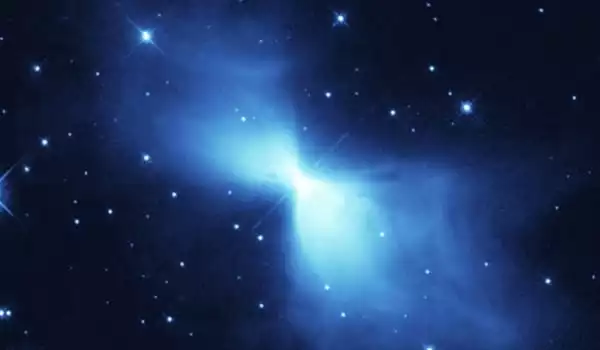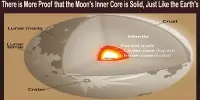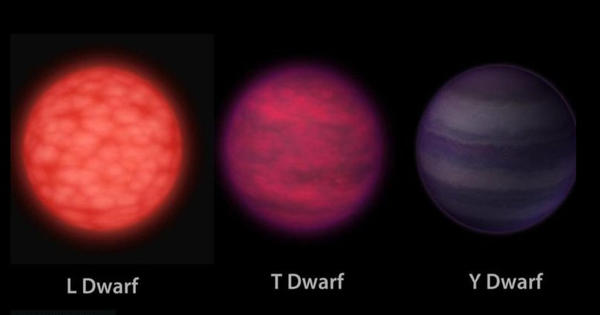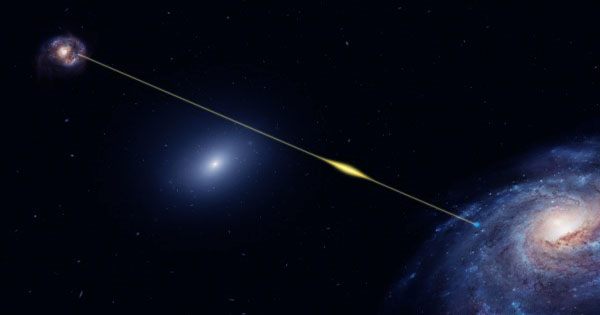Space is quite cold. Outer space has a baseline temperature of 2.7 kelvins — minus 454.81 degrees Fahrenheit or minus 270.45 degrees Celsius — which means it is just above absolute zero, the point at which molecular motion ceases.
However, this temperature does not remain constant across the solar system. Because there is (practically) nothing to absorb the energy from the sun, so-called “empty” space — though it is not literally empty — is significantly colder than planets, moons, or asteroids, for example. What is the coldest place in the solar system, excluding typical “empty” space? And how does it compare to Earth’s temperatures?
Measuring space
Let us first investigate how cosmic temperatures are calculated.
“Temperatures may be estimated by monitoring the intensity of infrared and microwave radiation emitted from surfaces,” said Ian Crawford, a professor of planetary science and astrobiology at Birkbeck, the University of London in the United Kingdom, in an email to Live Science. “Temperatures can be inferred based on the quantity of sunlight they get in the absence of such data.”
Taking cosmic measurements, on the other hand, isn’t always easy. “Nothing is ever straightforward in astronomy, partly because you are always observing, as opposed to interacting,” says Don Pollacco, an astronomy professor at the University of Warwick in the United Kingdom.
So, while there are accurate methods for measuring temperatures in space, there will always be potential for improvement. “Temperatures are approximations,” Pollacco explained. “The figures you calculate are determined on how good your assumptions are and how thorough the physical model you use.”
So, given those considerations, where is the coldest region in the solar system, at least according to current data? Perhaps Pluto, given its distance from the sun? In reality, the coldest point on the planet may be much closer to home.
Temperatures may be estimated by monitoring the intensity of infrared and microwave radiation emitted from surfaces. Temperatures can be inferred based on the quantity of sunlight they get in the absence of such data.
Professor Ian Crawford
To the moon
The Lunar Reconnaissance Orbiter, a NASA robotic mission meant to help scientists better understand lunar conditions, provided data in 2009 indicating that “shadowed craters” at the lunar south pole may be the coldest spot in the solar system.
Graduate student Patrick O’Brien and his mentor Shane Byrne, both planetary experts at the University of Arizona, later confirmed this notion. O’Brien and Byrne proposed that “doubly shadowed” moon craters could truly be “the coldest spots in the solar system” during a discussion at the 2022 Lunar and Planetary Science Conference.
A crater is considered doubly shadowed if it is “shielded not only from direct sun illumination but also from secondary heating sources,” such as “solar radiation reflected off neighboring illuminated areas as well as thermal radiation released from such warm surfaces,” according to O’Brien and Byrne.
Pollacco went on to say that “doubly shadowed” craters “have high enough rims that sunlight never reaches the crater floor,” explaining why they are so frigid. Given that these “permanently shadowed regions” have been “shielded” from solar illumination for billions of years, O’Brien and Byrne’s research suggests that their craters may contain “micro-cold traps” containing “not only water ice, but also more volatile compounds and elements,” such as carbon dioxide, carbon monoxide, dinitrogen, and argon.

According to O’Brien and Byrne, these craters are estimated to have temperatures of around 25 kelvins (minus 414.67 F, or minus 248.15 C), but they could be colder. Crawford is confident in the veracity of the research. “I’m sure these are the coldest temperatures in the inner solar system [from Mercury to Mars] and also colder than the estimated average surface temperature of Pluto,” he said.
According to NASA, the average surface temperature of Pluto is 40.4 kelvins, which is minus 386.95 degrees Fahrenheit or minus 232.75 degrees Celsius. According to Crawford, these doubly shadowed moon craters may not be as cold as the Oort cloud, a shell of frozen space debris located well beyond Neptune’s orbit. He highlighted that the distinction is dependent on whether we include the Oort cloud when describing the solar system.
NASA considers the Oort cloud to be both the “most remote part of our solar system” and “beyond” our solar system. Because of this ambiguity, it is sometimes viewed as a component of the solar system and at other times as the barrier between our solar system and interstellar space. The Oort cloud is considered to only be ‘”loosely bound to the solar system,” according to ThePlanets.org.
According to Northwestern University in Illinois, temperatures in the Oort cloud could be as cold as 5 kelvins (minus 450.67 F or minus 268.15 C), which would be far colder than any temperature found on our moon. However, if we don’t include the Oort cloud, the coldest place in the solar system is very likely to be found on our nearest celestial neighbor.
Earth comparisons
On Earth, even the coldest, most punishing Antarctic temperatures are far warmer than either the moon’s craters or the Oort cloud. The coldest terrestrial temperature ever recorded — registered on July 21, 1983, at Russia’s Vostok research station in Antarctica — was minus 128.6 F (minus 89.2 C), according to the World Meteorological Organization’s World Weather & Climate Extremes Archive.
Scientists, on the other hand, have experimentally manufactured temperatures that are lower than those found naturally on Earth, in the moon’s craters, or even in the Oort cloud. Last year, a group of German scientists set a new record for the coldest temperature ever reached in a laboratory: minus 459.67 F (minus 273.15 C), which they attained by “dropping magnetized gas 393 feet (120 meters) down a tower.”
However, when it comes to natural temperatures, the darkest, most murky caverns of our moon appear to have the lowest temperature in our solar system – depending, of course, on how you characterize the Oort cloud.
















